What Kind of Company is TEL?
Challenges and Growth: “TEL Today”
from the Perspective of Management, Technology Development, and Human
Resources
Culture
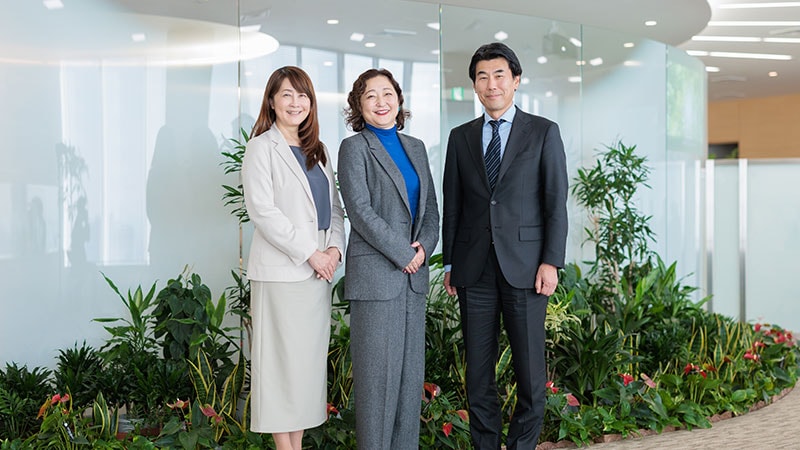
Semiconductors are the critical foundation of our society and industry. As a leading manufacturer of semiconductor production equipment, Tokyo Electron (TEL) contributes to the innovation of semiconductor technology in the pursuit of a dream-inspiring society. Today, the company employs approximately 18,000 people worldwide and has annual sales approaching 2.4 trillion yen.* What is the source of TEL’s strength? In the following discussion, three managers offer their perspectives on what kind of company TEL is. Kazuhiro Doh and Sumie Segawa represent the Corporate Strategy Division and the Corporate Innovation Division, respectively, and Kaori Takeuchi sub-head of the Human Resources Department.
Profile
-

Sumie Segawa
Segawa joined TEL in 1995 and was first assigned to the Central Research Laboratory. After assuming a series of responsibilities in the Technology Development Center, Development Planning Dept., Development Strategic Dept., and Development Planning & Promotion Dept., she was appointed Vice President & General Manager in 2022. She is also Division Officer of the Corporate Innovation Division. -

Kazuhiro Doh
Doh joined TEL in 1995 and worked in the LCD Production Equipment Department, Corporate Marketing Division, and Corporate Strategy Planning Department (CSP). He was appointed Vice President and General Manager in 2022, and also serves as Division Officer of Corporate Strategy Division, Chair of Sustainability Committee, Chair of Risk Management Committee, and Vice President of Branding Promotion Dept. -

Kaori Takeuchi
After graduating from university, Takeuchi joined a bank and was assigned to the technology section of the human resources (HR) department, where she was responsible for the entire HR system. She then moved to a foreign-affiliated consulting firm and then to another IT company to handle general IT operations. She brought her IT and HR expertise to TEL when she joined the company in 2017. After a stint in the U.S., she now leads the HR Business Partner, HR Technology, and DE&I Promotion groups.
- As of March 2025
Three Keys to TEL’s Growth: Passion, Diverse Characters, and Chains of Support
Would you tell us how TEL is positioned today?
Doh
Let me tell you about TEL’s growth, starting with the revenue trend. The company’s net sales have nearly quadrupled over the past decade, from approximately 600 billion yen in FY2015 to an estimated 2.4 trillion yen in FY2025. This surge in sales was the result of the semiconductor market expanding from approximately $300 billion a decade ago to more than $600 billion last year, driven by advances in cloud/edge computing, IoT, and Industry 4.0 etc. With the emergence of new applications such as AI, autonomous driving, and AR/VR, the semiconductor market is expected to exceed $1 trillion by 2030. It took 76 years for the market to reach its current size, but the industry consensus is that it will take only a few more years to double that growth.
What’s remarkable is that TEL’s growth has outpaced the market. While the wafer fab equipment (WFE) market in which we operate grew 3.1 times, TEL’s sales grew around 4 times. Our profitability also improved, led by favorable sales. TEL has been able to ride this wave of growth by working closely with global semiconductor manufacturing customers and contributing to semiconductor technology innovation. Together with our customers, we developed and implemented the 10-year technology roadmap to achieve this growth.
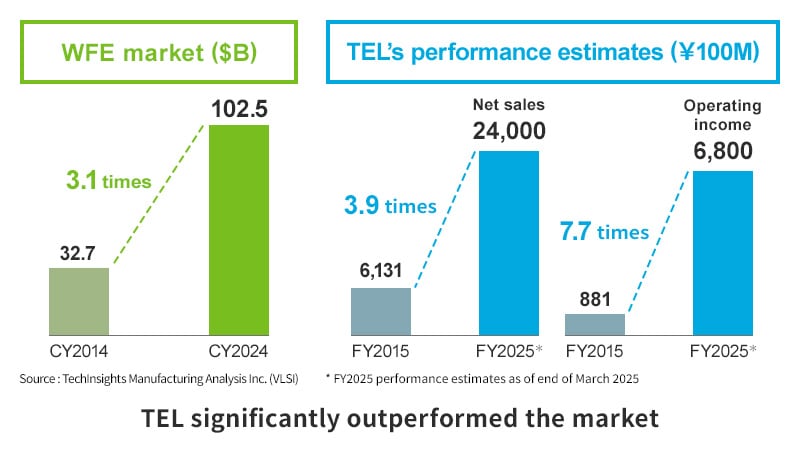
Doh-san and Segawa-san both joined TEL in 1995. Tell us about your first-hand experience with the growth of the semiconductor market and TEL.
Doh
At the time I joined, TEL was still building the foundation of the company we know today. Direct overseas operations were just begun and customer satisfaction programs were being implemented. We all felt that we were on the verge of entering a global market.
But it was in the last decade that more significant changes began to take place. Prior to 2010, there was speculation that advances in software would make hardware less important. What actually happened was that semiconductors were recognized as the driver of both hardware and software, and the semiconductor market grew by leaps and bounds. TEL outperformed the market by making sound investments in response to market changes and delivering results. Our changes over the past decade have been truly amazing, but the market will continue to grow, and so must TEL. We should increase our awareness of where the semiconductor industry is going and how we can contribute to society, and also update the organization to accommodate further growth.
Segawa
I totally agree. When we joined the company in 1995, the sales were only about 300 billion yen and there weren’t that many employees, so we all knew each other and made friends easily (laughs). As semiconductor innovation and market growth continued, TEL also underwent a major transformation.
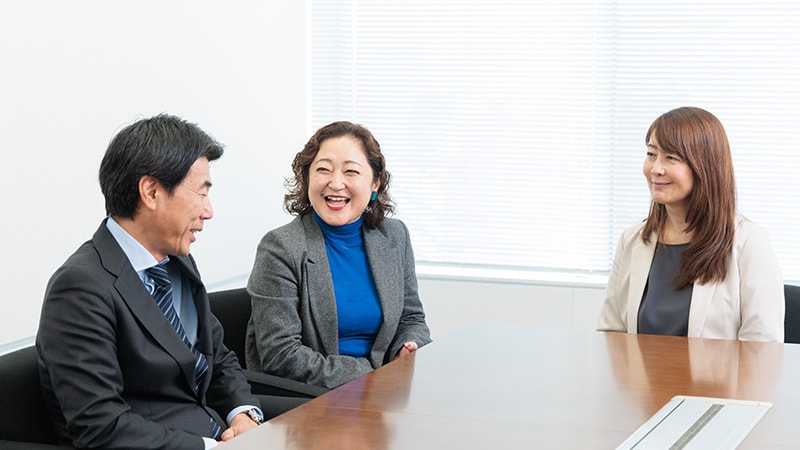
Who all has led TEL’s growth? How diverse is the talent that works for us today?
Segawa
At the Yamanashi site in Japan where I was assigned during my rookie years as a development engineer, most of my colleagues were dedicated workers who really enjoyed what they were doing. I think none of them felt obligated to work; they just loved it.
Research development at TEL is quite technology-intensive, and each project requires everyone to be fully engaged, both as an engineer and as a team member. Of course, no one is treated differently based on gender or nationality. We also understand that it takes a team to develop a product. When members with sharp minds get together and bring their respective areas of expertise to the table, they can come up with ideas for great products. Because they have the same goal, they put all their knowledge and experience into the project and talk things through. It has always been TEL’s tradition that unique characters take the lead.
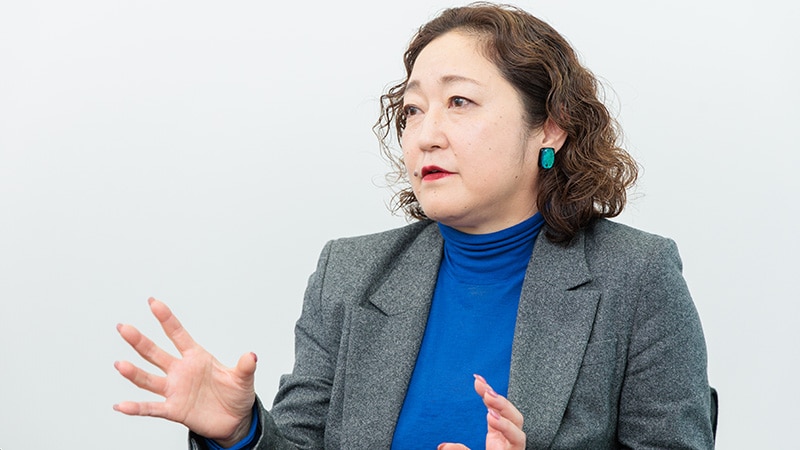
Takeuchi
As an IT and HR systems consultant, I have worked with many different clients, including TEL. Even to an outside observer, TEL’s culture of respect for unique individuals seemed palpable. I felt that TEL was full of people who clearly knew what they wanted to accomplish and were passionate about their work, even arguing heatedly in the interest of creating excellent products. This impression did not change after I joined TEL.
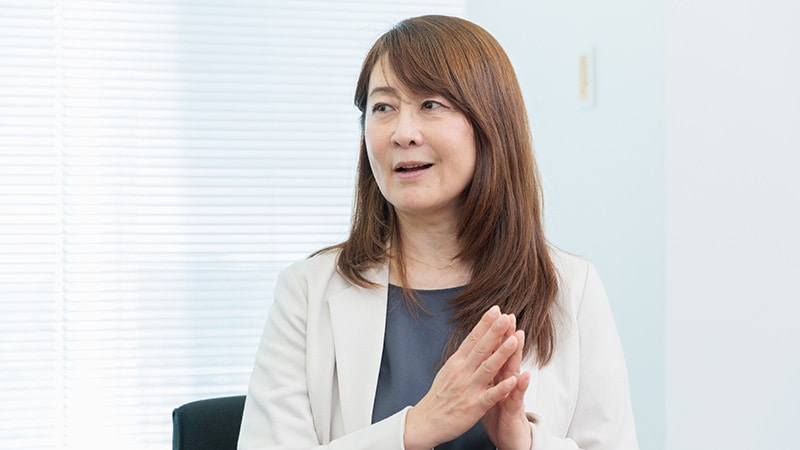
Doh
When Segawa-san and I joined TEL in 1995, the company was still small and everyone worked with unwavering commitment. Direct overseas operations were just begun, and many of my colleagues who joined at the same time as I did were sent to Europe and the U.S., along with plant staff. Even those whose English wasn’t too good were given the chance to go overseas if they really wanted to. I didn’t take that chance because I was in domestic sales. So, I have never worked overseas (laughs).
Segawa
We all felt that the overseas markets were becoming much closer during those years. In the first decade of the 2000s, a product development site in the U.S. became fully operational, and there was an increase in the number of projects in which Japanese and local members worked together.
Takeuchi
After joining TEL, I was given the opportunity to work overseas. Later on, as an HR specialist, I also visited various overseas TEL sites. In all of these locations, I felt that there was a mutual respect between the headquarters and the local sites. TEL’s commitment to providing customers with better products and technical services is shared in every location around the world. People from different backgrounds work together diligently and support each other regardless of nationality. No one works against each other or tries to claim credit, and they speed things up by working together. I think this chain of support creates a positive atmosphere throughout the company.
Doh
As we strive to refine technologies to satisfy customers and compete globally, we must improve teamwork by aligning the goals of all members, regardless of nationality. From an early stage, TEL has worked hard to get very diverse team members on the same page.
A place with a mountain of opportunities, where you can do as much as you are motivated to accomplish.
What are TEL’s future business growth strategies?
Doh
The semiconductor market is expected to reach $5 trillion by 2050, and TEL aims to be number one in the market. Our key products already have the world’s leading or second-largest market shares, which we want to increase and secure in preparation for future technology inflections. It is imperative for us to develop and introduce new equipment that has the potential to expand our market. To achieve this goal, we are formulating and implementing technology strategies in cooperation with the development team led by Segawa-san.
Global market share rankings
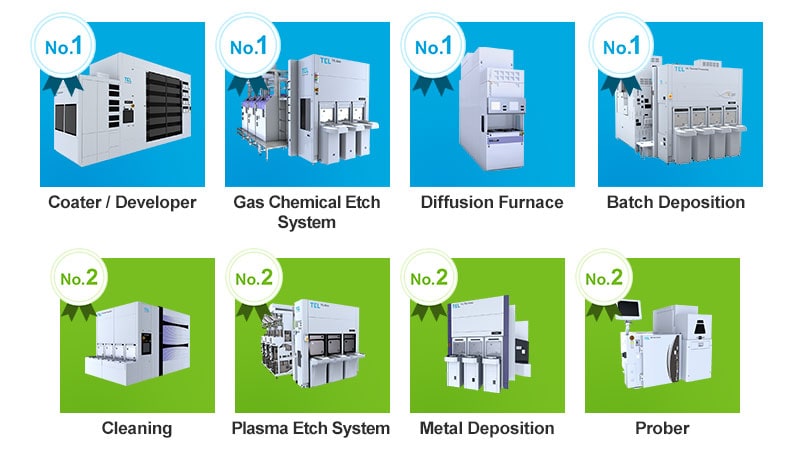
Segawa
The technology innovation cycle in the semiconductor industry is shorter than anywhere else. That is precisely why we should motivate engineers and keep their passion for technology alive. Engineers who fully engage with and take ownership of the projects at hand can unleash an extraordinary level of potential, magnifying their impact many times over. It is up to us to create an environment where engineers can use their skills to the fullest and take on one challenge after another. The other day, an engineer who won an internal technology award said, “I’ve had countless failures in my career, but I’m still here, continuing to develop technology and even winning an award!” No one wants to fail, but success in technology development is not guaranteed. Still, failure can be a valuable experience, and I want TEL to remain tolerant of productive failure.
Doh
Creating opportunities to take on new challenges means investing in growth where appropriate. It is the role of corporate leaders, including myself, to provide this kind of support.
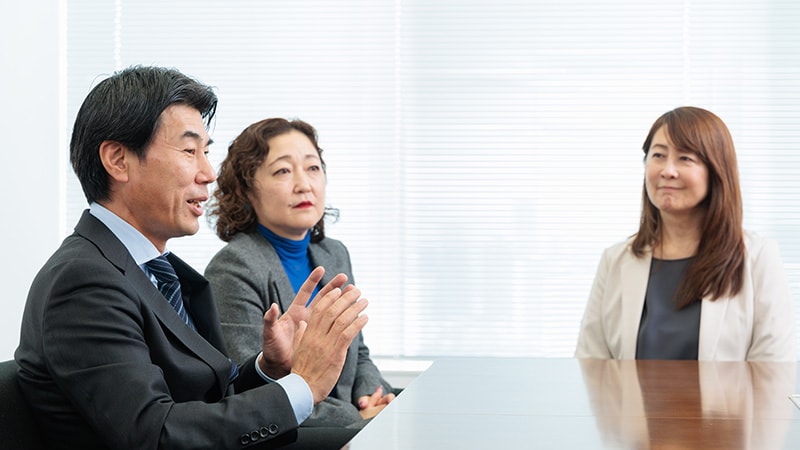
Segawa
When I worked as a development engineer, I never had a negative reaction from others to anything I proposed as a challenge. Of course, the green light was often given when there was a good expectation of achieving operational business milestones, but adventurousness was definitely encouraged. We are also proud that TEL leads its peers in the number of patents it holds and the percentage of employees who are first named primary inventors. We will continue to strive to ensure that engineers who love technology see TEL as a place with a mountain of opportunities where they can do as much as they are motivated to do and find it an interesting environment.
As TEL continues to grow, what kind of skilled talent do we need? And what is expected of them in the workplace?
Segawa
Today’s semiconductor manufacturing processes increasingly require unconventional technologies. For example, the application of new technologies such as AI and environmental innovations to manufacturing processes has not been significantly highlighted within the industry so far. But expertise in these areas will soon be essential, so we will need the professionals. The term “semiconductor manufacturing equipment” covers a wide range of processing systems, each of which requires completely different technologies. In fact, a single system represents a cornucopia of technologies, so we need to coordinate all kinds of technology areas. We have mid-career hires from really diverse backgrounds, including a former food manufacturing worker now in chemical analysis, and an ocean color researcher who brought us expertise in spectral resolution technology. Our talent pool is very diverse and exciting.
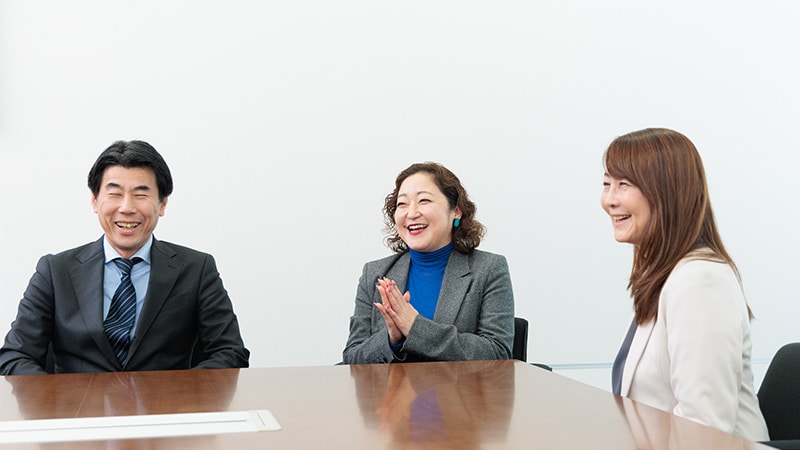
Doh
The range of technologies required is indeed vast, although we cannot go into detail because many of them involve confidential customer information.
Segawa
Bringing standards from other industries into semiconductors and combining them with existing technologies is how we create new products and deliver the innovation expected of us. In addition to people from other industries, I very much welcome the younger generations, whose approach to IT is different from ours. As TEL is an inclusive company, I expect diversity to continue to grow in terms of technology, generation, and gender.
Takeuchi
Many of our mid-career hires say they are impressed with TEL’s global and freewheeling spirit, as well as its culture that considers inaction riskier than failure. It shows that the company’s environment is suitable for adventurous transferees from other industries. TEL’s inclusiveness and flat organization are evidenced by the fact that all managers and employees address each other as “-san,” and every employee has the opportunity to interact with members of the management team since its founding, unlike the so-called traditional and rigid Japanese companies. No matter how diverse our workforce becomes, our mindset remains united because we share a code of conduct and values called the TEL Values.

Doh
That’s right, we uphold the five values of Pride, Challenge, Ownership, Teamwork, and Awareness. If you feel that any of these values are lacking, I encourage you to take corrective action anytime, anywhere. TEL expects its employees to live these values at all times.
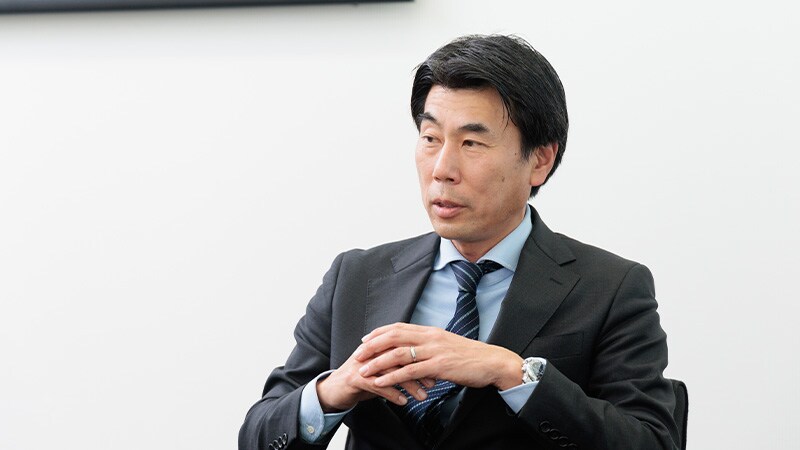
Taking a New Step with People of Different Backgrounds
What is HR doing to support the dynamics of a diverse talent pool?
Takeuchi
In many cases, mid-career hires are often required to jump
right into the field and start working, which can sometimes
lead to a lack of attention and support for them. We believe
it is necessary to implement measures to promote a comfortable
working environment, such as holding networking events for
mid-career hires as a means of providing follow-up support.
Additionally, it is important to create learning opportunities
for everyone, as this is essential for all individuals'
growth.
TEL has initiatives that incorporate a mentorship system. For
example, in South Korea, where the number of female engineers
is low currently, we have introduced a mentorship program that
connects them with female engineers in the U.S. and Japan.
There are many talented individuals around the world who can
fill the gaps in certain regions. We plan to expand
initiatives that utilize our global talent. While listening to
the voices from the field, we want to continue considering the
necessary measures.
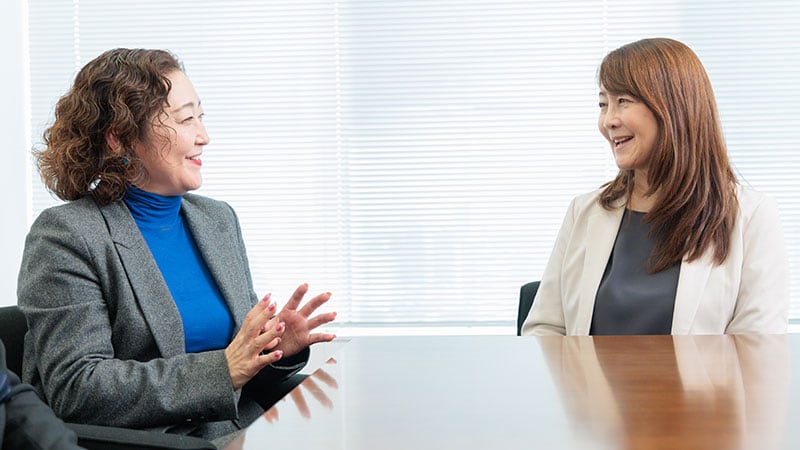
Finally, please share your vision of how semiconductor technology innovation should change the world.
Segawa
We are part of a generation that has seen first-hand how advances in semiconductor technology have made our lives more convenient and more comfortable. I believe that technology makes the world a better place, which is why I became an engineer in this industry. Today, as various technologies mature, creating a green society through digital technology has become a new goal for all of us. From a greening perspective, the existing manufacturing technologies have a lot of room for improvement. Because semiconductors are so widely used today, it is essential to produce semiconductors that are not only faster, more reliable, and with greater memory capacity, but also consume less power and are more environmentally friendly.
One of TEL’s strengths is that we have a lot of engineers who are hungry for innovation. I was discussing about technology trends becoming more green at an internal meeting the other day, and one engineer said, “I’m glad I’ve been introduced to this new paradigm because it gives me new development ideas to explore.” We are all very serious about making the world a better place through our business.
Doh
You are absolutely right. Our technologies and our business must contribute to the happiness of people and the continued growth of society. We should always ask ourselves what we can do to make that happen and keep challenging ourselves.
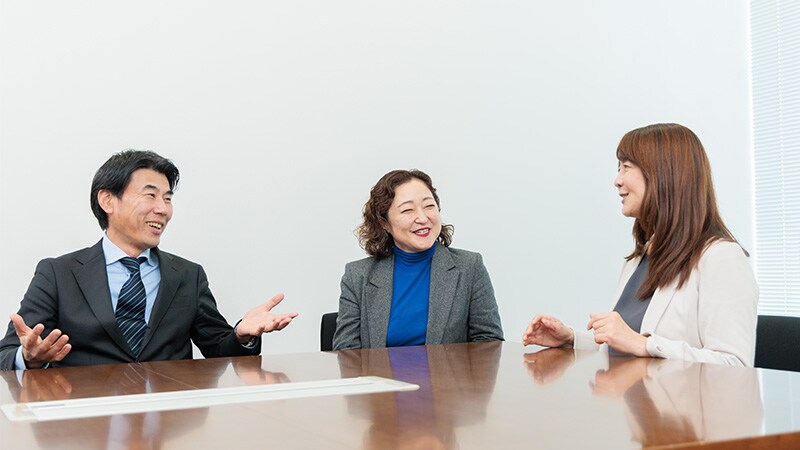
Takeuchi
That is why we need more people who are not afraid of a challenge. TEL is becoming more global in every way, so I’m sure that proactive people who join us will benefit from a wider range of opportunities. The timing is ideal for the right people to join TEL, and once they become part of our team, a brighter future will follow.
Segawa
I think I speak for all of us when I say that we love TEL. I just want this company to be a magnet for future generations of people.
Doh
My feeling exactly. Let’s do what we can in our respective positions to make it happen!



